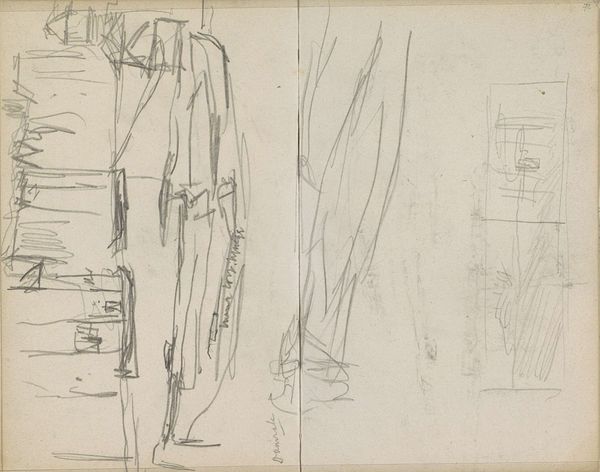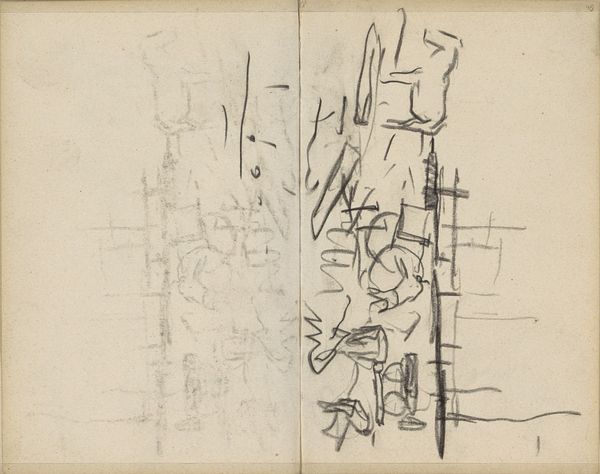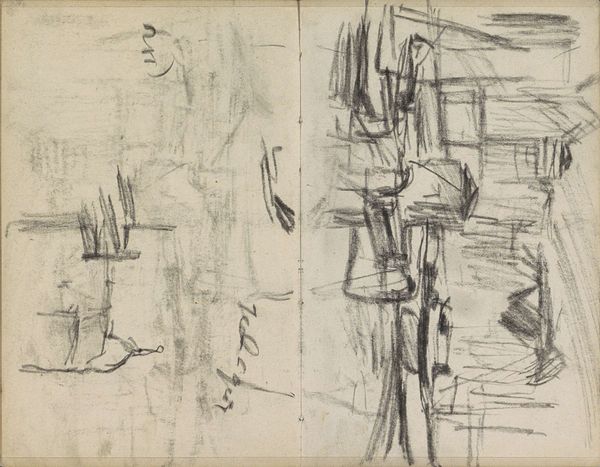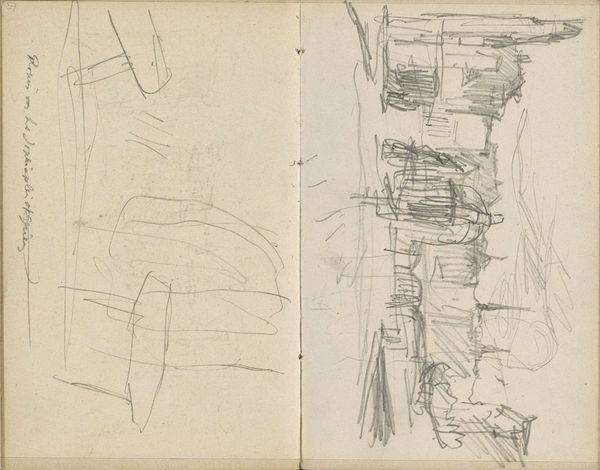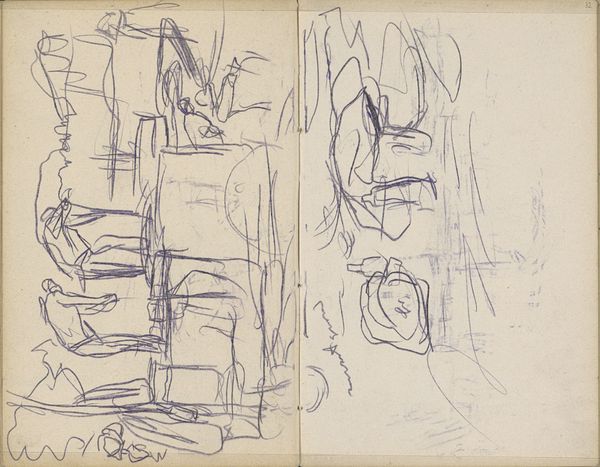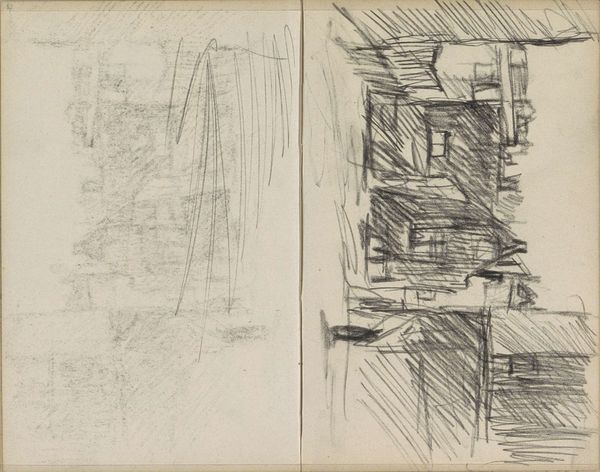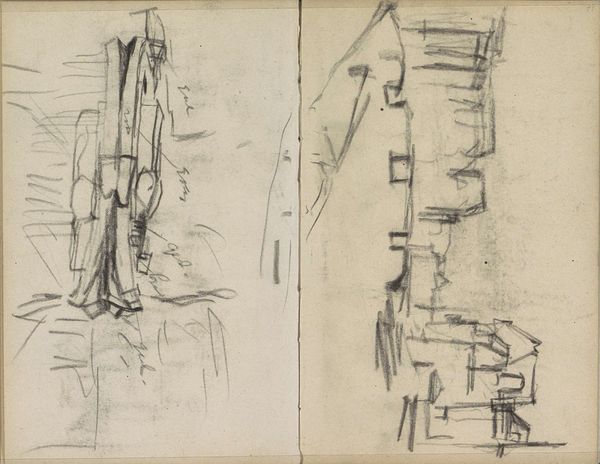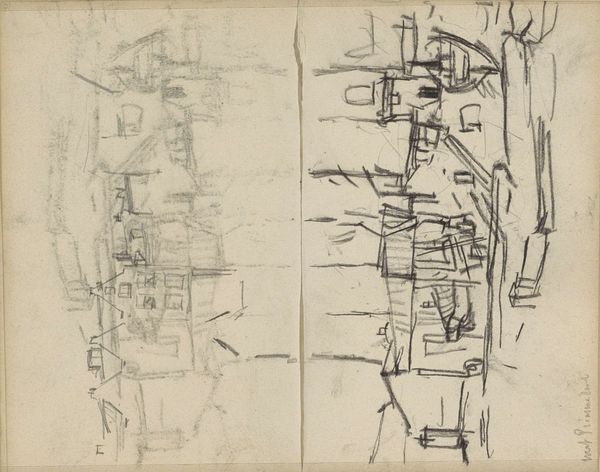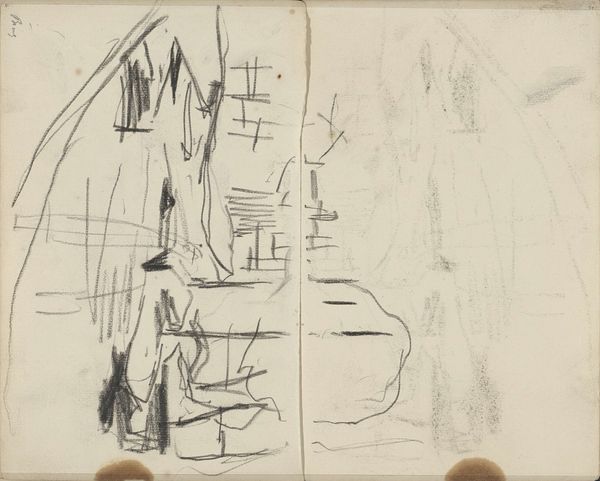
Copyright: Rijks Museum: Open Domain
Editor: So, this is "Gezicht op het Damrak te Amsterdam met boten" - a graphite and pen drawing by George Hendrik Breitner, sometime between 1912 and 1919. It looks like a page torn straight from a sketchbook. It's really gestural, very immediate. I’m curious, what first strikes you about this piece? Curator: The Damrak... even in this skeletal sketch, the location resonates. For centuries it served as Amsterdam's harbor front. Can you see how the jumble of masts and rigging might evoke a forest, hinting at Amsterdam's maritime power and, maybe, its vulnerability? These weren't just boats; they were lifelines, arteries pumping wealth and ideas into the city. Editor: I see what you mean. It's more than just boats, it is evocative. Is that why you focus on that imagery? Curator: Think about what a harbor *means*. Arrivals, departures. The unknown stretching out beyond the horizon. What visual symbols might connect the local viewer to broader histories of global exchange, colonialism, and even exploitation that fueled Amsterdam's golden age? The sketch feels more than a landscape. Editor: Wow, I hadn’t thought of it that way. It definitely adds a layer of depth to what seems like a simple drawing. You look beyond just what is materially depicted to how viewers, especially those familiar with Amsterdam's history, might experience its deeper significance and memory. Curator: Precisely! It becomes a vessel of cultural memory, an image that activates deeper understandings and potentially even anxieties about Amsterdam’s place in the world then, and now. A quick sketch suddenly holds a lot. Editor: So true! Thanks; this really gives me a lot to think about.
Comments
No comments
Be the first to comment and join the conversation on the ultimate creative platform.

